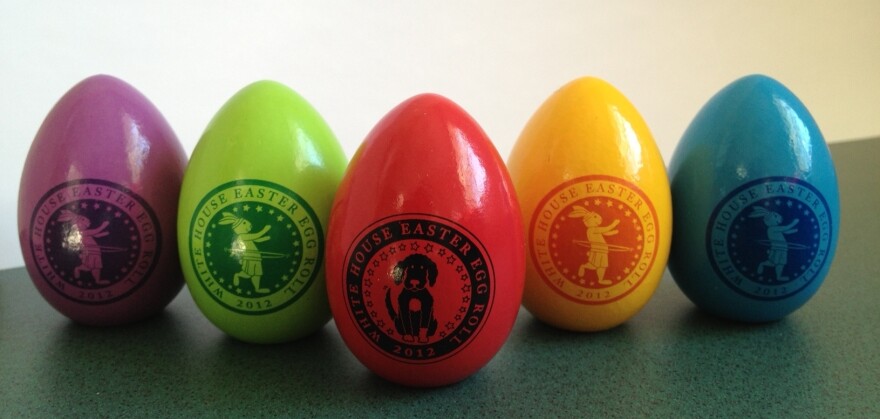On Monday, thousands of children will descend on the White House lawn for the annual Easter Egg Roll. They'll walk away with keepsakes: painted wooden Easter eggs made at a small mill in rural Maine.
Drive through Buckfield, home to about 2,000 people in inland western Maine, and you'll see the markers of a typical small town: a library, a general store and a closed business — in this case, a shuttered theater.
But follow the road around the bend, and soon you'll find a business that's survived tough times: Wells Wood Turning & Finishing. In addition to other products, it makes wooden Easter eggs, starting every February.
"As you can imagine, it can get a little cold and dreary ... and it's nice to see this flash of color coming through the mill," says Alan Chesney, co-owner of the company.
For seven years now, Wells Wood Turning has cranked out about 100,000 wooden eggs for the White House every Easter. The eggs first take shape in their mill.
Chesney opens the door to the clamor of machines churning out everything from tool handles to rolling pins.

In "Spool Alley," a worker stands on one end of a lathe, cutting short cylinders of birch or maple that then roll down through a series of steps that turn and shape them into eggs. It takes about 10 days to go from a piece of wood to a finished Easter egg.
The company has little more than a month to meet the deadline once the White House gives final approval on color and design.
The 30 employees who work here come in on weekends, sometimes even overnight, to produce about 10,000 eggs a day. The owners say that kind of dedication is why this company still exists today, while nearly all other wood manufacturers in Maine have closed. John Pietroski, the general manager, says the extra hours are worth it for the eggs.
"I'm very proud of them. I truly am. It's a little piece of artwork," he says.
After the eggs are shaped and sanded, they tumble in open, rotating metal barrels that coat them in bright shades of pink, yellow, blue, purple and green.
After five to 10 coats, the logo is printed: an image of the Easter Bunny jumping rope. The design changes every year to tie in with first lady Michelle Obama's exercise initiative.
Production supervisor Ellen Bragg says her favorite part of making the eggs is boxing them up and shipping them to their ultimate destination.
"It's exciting thinking you're going to make something that's going to the White House, and that it gets displayed all over the Internet," she says. "It's exciting that this small, little town ... made something."
Something smooth and colorful from Buckfield, Maine, that will soon be in the hands of thousands of kids on the White House lawn.
Copyright 2020 Maine Public. To see more, visit Maine Public. 9(MDAxODQzOTgwMDEyMTcyNjI4MTAxYWQyMw004))


